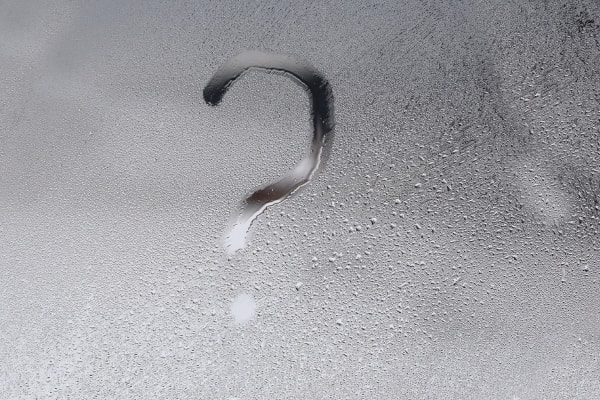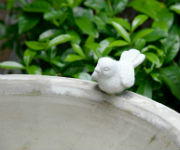
Source: Shutterstock / Author: Venera Salman
Are you looking for ways to reduce condensation in your home? Condensation is unpleasant and unwelcome wherever it rears its damp head. It looks bad, can ruin curtains or blinds, and can even lead to patches of dampness and mould forming. No matter how often you wipe away the water it always gathers again as if to mock the futility of your actions, don’t lose hope.
Follow these steps to minimise condensation inside your home and reduce humidity levels.
Table of Contents
What is condensation?
Condensation is the process of water droplets forming when warm, moisture-filled air comes into contact with a colder surface or when the humidity levels in a home become too high. As the warm air meets the cool surface, it rapidly cools down, causing the water vapour to transform into tiny liquid droplets that settle onto the colder surface.
If this is left untreated it can cause paint to peel as well as unsightly growths of black mould which can spread to curtains and furniture, this mould can also lead to a variety of health problems such as bronchitis, and among the heftiest tasks for move out cleaning.
What causes condensation?
After noticing condensation inside your home, it’s crucial to pinpoint the root cause. Any activity that involves water evaporation can raise humidity levels and trigger condensation. There is always water in the air but the amount can be greatly affected by many factors, the most common of which are as follows.
- Season and humidity – The season and humidity levels play a large role in the chances of condensation forming. You are far more likely to notice condensation during the winter months due to the cold weather, keeping your windows closed, and using the central heating more often.
- Cooking/kettles – Boiling liquids while cooking. Both cooking and boiling the kettle are major culprits when it comes to adding water to the air. All of that water vapour has to go somewhere.
- Steam ironing or ironing damp clothes.
- Tumble drying without proper ventilation.
- Indoor clothes drying, – Another huge contributor to the household humidity level. Drying clothes on radiators, especially during the winter, pumps a horrendous amount of water into the air. You may have seen condensation on the wall above the radiator, this is a tiny fraction of the water vapour released.
- Bathing/showering – It almost goes without saying that taking a bath or shower releases a lot of water into the air.
Common signs of condensation
The first sign of condensation is fogging up and streaming windows before wallpaper and paint peel, black mould patches appear, and musty odours emerge. If you notice dampness in your house, look for these signs:
- Water droplets forming on surfaces: When water vapour comes into contact with a surface that is cooler than the air, it can condense and form water droplets on that surface. This is often seen on windows, mirrors, and other smooth surfaces.
- Fog or mist: When the air temperature drops and there is a high amount of moisture in the air, fog or mist can form. This is a type of condensation that occurs in the air.
- Dampness or moisture in the air: If the air in a room or space feels damp or humid, it may be a sign of condensation. This can occur when there is a high level of moisture in the air, and the temperature drops, causing the moisture to condense.
- Mould or mildew growth: When moisture accumulates in a space, it can create conditions that are conducive to mould or mildew growth. These growths can be a sign that there is excess moisture in the air, which could be a result of condensation.
How to get rid of damp and stop condensation
To get rid of condensation you have to improve the ventilation. First, we will outline some basic steps for condensation removal.
Here are some tips to deal with condensation inside your home:
- Increase ventilation: Proper ventilation is essential to reduce humidity levels inside your home. You can install extractor fans in kitchens and bathrooms, open windows regularly to let air circulate and ensure that air vents are not blocked.
- Use insulation: Insulate windows, doors, and walls to prevent warm air from coming into contact with cold surfaces.
- Repair water leaks: Any leaks in your plumbing or roof should be repaired as soon as possible to prevent moisture buildup.
- Monitor temperature: Keeping your home warm can help prevent condensation from forming on cold surfaces. You can do this by maintaining a constant temperature in your home, using heating, and closing doors to unused rooms.
- Dry wet surfaces: Wipe down windows, walls, and any other surfaces that are damp to prevent water droplets from forming.
- Modify daily activities: Limit activities that generate moisture, such as indoor drying of clothes, showering with the door open, and boiling liquids without lids.
How to stop condensation on windows
- Wipe the affected windows with a squeegee and dry the window, windowsill and surrounding area with a towel.
- Open the windows to let damp air out and dry air in.
- Install weather strips to stop cold air from entering through the joints and frame.
- Install trickle vents. These vents help to improve ventilation when it is inconvenient, or unsafe, to leave your windows open for an extended period of time.
How to stop condensation on double-glazed windows
Follow the same steps as above except for number three, the seals built into the frames are usually more than enough to keep cold draughts outside where they belong.
How to stop condensation on walls
- Open as many doors and windows as you can to get the air moving.
- Keep a small gap between your furniture and walls, this will ensure there is adequate airflow throughout the room.
- Make sure your home is properly heated during colder months.
- Stop drying clothes on radiators. If you don’t have any choice but to dry clothing indoors, dry them in a separate room with an open window and close the door.
How to stop condensation in the bathroom
- If your bathroom has a window, keep it open as often as possible.
- Always use the bathroom fan when bathing or showering. If your bathroom doesn’t have a fan, consider having one fitted as they are a tremendous help in the battle against condensation.
- Wipe down any wet surfaces with a squeegee or cloth when you are finished bathing or showering.
- Keep the fan running, or the window open, for at least an hour after you finish using the bathroom.
- Shut the bathroom door to stop the moist air from infiltrating the rest of your home.
How to stop condensation in the kitchen
- Improve ventilation by keeping windows as open as possible. Open a window when cooking or boiling the kettle to give the moisture somewhere to go that isn’t your walls or ceiling.
- Always use an overhead extractor fan while cooking and, if possible, when boiling the kettle.
- Using pan lids when cooking, not only will reduce the cooking time, but it will also stop a ridiculous amount of water from being released into the air.
- Keep the window open, and the extractor fan running, for at least an hour after you finish cooking.
How to stop condensation in the car
To reduce condensation inside the car, lower the cabin’s humidity level. Condensation can be prevented if the humid air is vented outside. Using the car’s air conditioning system is the best way to remove moist air.
- Don’t leave your damp belongings in the car, think of jackets, towels, and umbrellas.
- Keep your car clean inside and outside. Most modern cars have tiny holes in the chassis to aid airflow which are easily blocked by dirt due to their size. Regularly cleaning your car will keep these air holes open. Don’t forget to clean the inside face of the windows either, accumulated dirt gives water an extra surface to cling to which allows more condensation to form.
- Let the car air as often as possible, and open the windows and sunroof for a few hours on warm days if it is safe to do so.
- To get rid of condensation when you first get in the car you should wipe the windows with a cloth or squeegee, switch the heaters on at the highest setting and point them towards the windows. If this is taking too long, open the window a little bit to improve the airflow. Don’t start driving until the condensation has completely cleared, the reduced visibility can be fatal.
How to prevent condensation
Here are some effective ways to prevent condensation in your home:
- Use pan lids while cooking to prevent steam from escaping and increasing humidity levels.
- Keep kitchen and bathroom doors closed while in use to prevent moisture from spreading to other areas of the house.
- Dry your clothes outdoors to avoid excess moisture inside the house.
- Use an extractor fan when taking a shower to remove steam and humidity from the bathroom.
- Ensure that your washing machine is correctly vented to prevent excess moisture in the air.
- Move your furniture away from external walls to promote better air circulation and prevent moisture buildup.
- Install an extractor fan in the kitchen or bathroom to improve ventilation and reduce humidity levels.
- Buy a dehumidifier. If you live in a high-humidity area or the condensation keeps reoccurring, you may consider buying a dehumidifier. These fantastic machines do what you would expect them to do, namely, they remove moisture in the air to make it less humid. A good dehumidifier left running overnight, or during the day, can remove up to 12 litres of water from the air in a 3-4 bedroom house.
- Perform an inspection of your home. Check the interior and exterior walls as well as the roof for any damage that could be allowing water or cold air to enter, fixing these issues can help stop condensation as well as improve the energy efficiency of your home.
- Also, check the gutters to make sure they are not blocked or damaged and can drain water easily. If the water is flowing out of the gutter and down the wall you will have a serious issue with dampness sooner rather than later.
Need your gutters checked and cleaned?
Enter your postcode to view our rates and availability in your area.
For questions about the services we offer visit our main site or you can always call us at 020 3404 0145
Did we miss anything? Do you have any tips for getting rid of condensation at home? Let us know by commenting below or give us a shout on social media!









Leave a Reply